| Srl | Item |
| 1 |
ID:
137890
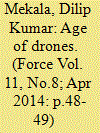

|
|
|
|
|
| Summary/Abstract |
Taranis, a top secret unmanned aerial vehicle (UAV), which is considered to be the most advanced aircraft ever built by British engineers, successfully carried out its first flight tests in August 2013. The information, however was released to the media only in February 2014 by the UK ministry of defence (MoD) and the manufacturer BAE systems. “The UK has developed a significant lead in understanding unmanned aircraft which could strike with precision over a long range whilst remaining undetected,” said a statement from BAE systems. “The technological advances made through Taranis will also help the UK MoD and Royal Air Force (RAF) make decisions on the future mix of manned and unmanned fast jet aircraft and how they will operate together in a safe and effective manner for the UK’s defence”.
|
|
|
|
|
|
|
|
|
|
|
|
|
|
|
|
| 2 |
ID:
171573
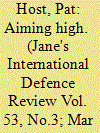

|
|
|
| 3 |
ID:
111276
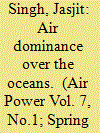

|
|
|
| 4 |
ID:
127727


|
|
|
|
|
| Publication |
2014.
|
| Summary/Abstract |
In the past three years, NATO countries have cut $120 billion from their combined defence budgets, and they are set to fall further in the next decade. In the US, the Budget Control Act will, by 2021, cut US government spending by $1 trillion much of which will come from defence cuts. US Defence Secretary, Chuck Hagel, said in 2013 that one of the least drastic ways of reaching cuts needed by the sequester would see up to 70,000 less active personnel in the US Army and up to 65,000 less in army reserves. The US Air Force could lose some 25,000 personnel because of sequester, along with 550 aircraft, according to USAF Secretary Eric Fanning.
|
|
|
|
|
|
|
|
|
|
|
|
|
|
|
|
| 5 |
ID:
121545
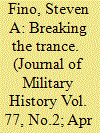

|
|
|
|
|
| Publication |
2013.
|
| Summary/Abstract |
A survey of U.S. Air Force air-to-air armament from World War II through Vietnam's Operation ROLLING THUNDER reveals the institution's focus on developing advanced technologies and tactics designed to thwart hordes of Soviet bombers. Challenged by nimble MiGs over Vietnam, the service was reluctant to investigate "low-tech" armament solutions. When the value of a gun in air combat was finally acknowledged, the Air Force elected to field it as part of an integrated weapons system on the F-4E. In the interim, pilots at DaNang air base cobbled together an inelegant but effective air-to-air external gun system. The episode reveals the significant potential, and fragility, of unit-initiated tactical innovation and the peril that can arise when an organization's technological exuberance obfuscates less technologically-appealing solutions.
|
|
|
|
|
|
|
|
|
|
|
|
|
|
|
|
| 6 |
ID:
129791
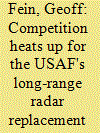

|
|
|
| 7 |
ID:
183301
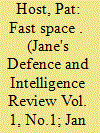

|
|
|
| 8 |
ID:
140563
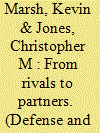

|
|
|
|
|
| Summary/Abstract |
AirSea Battle (ASB) has generated significant publicity, controversy, and debate among scholars, analysts, commentators, and observers of US defense strategy. However, a research gap exists concerning formal analysis of the impact of the operational concept on the relationship between the US Air Force (USAF) and the US Navy (USN). The impact of the ASB operational concept on the USAF–USN relationship is examined across the issue areas of strategy, budgets, weapons procurement, and training. These four issue areas represent important areas of historical conflict and competition between the Air Force and Navy. The conclusion is that ASB is ushering in a new era of Air Force–Navy partnership that advances the inter-service dynamic from “jointness” toward integration. The emergent USAF–USN partnership therefore represents a significant development in US defense politics and defense strategy.
|
|
|
|
|
|
|
|
|
|
|
|
|
|
|
|
| 9 |
ID:
119373
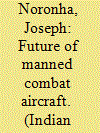

|
|
|
| 10 |
ID:
171607
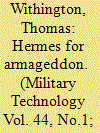

|
|
|
| 11 |
ID:
116790


|
|
|
|
|
| Publication |
2012.
|
| Summary/Abstract |
Most studies of the herbicide Agent Orange focus on its use in the Vietnam War or its long-term consequences. Lost is the story of the 2.4 million gallons of Agent Orange still in the U.S. military's possession after its use was banned in 1971. The U.S. Air Force addressed this surplus supply during Operations Pacer IVY and Pacer HO, navigating challenges ranging from the growing environmental movement to new government bureaucracies devoted to environmental protection. This essay seeks to help fill a gap in Agent Orange scholarship and add to the literature on the intersections of military and environmental history.
|
|
|
|
|
|
|
|
|
|
|
|
|
|
|
|
| 12 |
ID:
156036
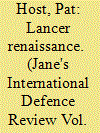

|
|
|
| 13 |
ID:
115035
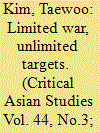

|
|
|
|
|
| Publication |
2012.
|
| Summary/Abstract |
In the early days of the Korean War, the U.S. Air Force (USAF) had a policy of precision bombing military targets only. Policy-makers in Washington, D.C., formulated this policy to ensure the protection of Korean civilians and to increase the effectiveness of their air operations. Senior USAF officers in Korea, however, were unhappy about the limitations placed on them by Washington. In their strategic air operations against targets in North Korea USAF officers followed Washington's precision bombing policy, but they insisted that USAF bombers be permitted to use incendiary bombs against population centers in North Korea. China's entry into the war in November 1950 led to a drastic change in the precision bombing policy. On 5 November 1950, when the UN forces began suffering defeat after defeat in battles with the new enemy, General Douglas MacArthur designated cities and villages in North Korea as "main bombing targets" and permitted the use of incendiary bombs, which had been used in attacks against Japanese cities during World War II. From that point until the end of the war, the USAF regarded North Korean cities and villages as their crucial targets as political and military occasion demanded.
|
|
|
|
|
|
|
|
|
|
|
|
|
|
|
|
| 14 |
ID:
125883


|
|
|
|
|
| Publication |
2012.
|
| Summary/Abstract |
For every 24 fuel convoys a US soldier dies", said Dave Muchow, President of Sky Build System, which has been providing rapidly deployable renewable energy power option to the US army and Navy.
|
|
|
|
|
|
|
|
|
|
|
|
|
|
|
|
| 15 |
ID:
166741
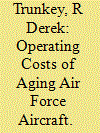

|
|
|
|
|
| Summary/Abstract |
The rate at which operating costs grow as aircraft age is important for setting operating budgets and for deciding when to replace aging systems. While studies using data from the 1990's typically found 1–3 percent real rates of growth in operating costs as aircraft age, studies using data from the 2000's found greater rates, for example in the 4–6 percent range. Growth in the total U.S. Air Force budget during the 2000s appears to explain much of the higher estimated annual growth rates in operating costs per flying hour beyond the growth rate intrinsic to the aging of the fleet.
|
|
|
|
|
|
|
|
|
|
|
|
|
|
|
|
| 16 |
ID:
131936
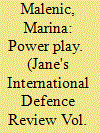

|
|
|
| 17 |
ID:
115517
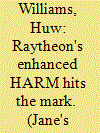

|
|
|
| 18 |
ID:
189428
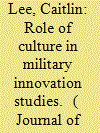

|
|
|
|
|
| Summary/Abstract |
The purpose of this article is twofold. First, it contributes to our understanding of the role of culture in shaping innovation success and failure in the US Air Force, concluding that competing cultural norms explain the service’s uneven and halting approach to the development and employment of the Predator drone. Second, it breaks new ground in the debate about the role of culture in military innovation. In contrast to earlier scholarship, it contends that it is possible to view culture as a central force in military innovation while adhering to the principles of positivism.
|
|
|
|
|
|
|
|
|
|
|
|
|
|
|
|
| 19 |
ID:
149415


|
|
|
| 20 |
ID:
112946
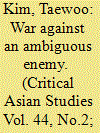

|
|
|
|
|
| Publication |
2012.
|
| Summary/Abstract |
In the early months of the Korean War, close air support provided by the U.S. Air Force (USAF) fighter-bombers in the front-line areas significantly delayed the advance of the North Korean Army. This article shows, however, that U.S. pilots very quickly diverged from the original policy of precision bombing and began the indiscriminate and unrestricted bombing of villages, towns, and even refugees in the South Korean region. They did so for three reasons: (1) to deal with effective countermeasures being taken by the North Korean Army; (2) the short range of U.S. fighter-bombers taking off from bases in Japan; and (3) difficulties in finding clear targets. Civilian areas were not exempt because most USAF pilots regarded the people in civilian areas as enemy troops and villages were considered to be enemy shelters. In the early months of the Korean War, the Operations Analysis Office (OAO) of the USAF had already acknowledged that "in a certain number of cases the troops in question may have been civilians." This article draws on mission reports written by U.S. pilots and on OAO reports to make the case that the conduct of American fighter-bomber pilots during the Korean War needs serious reconsideration.
|
|
|
|
|
|
|
|
|
|
|
|
|
|
|
|